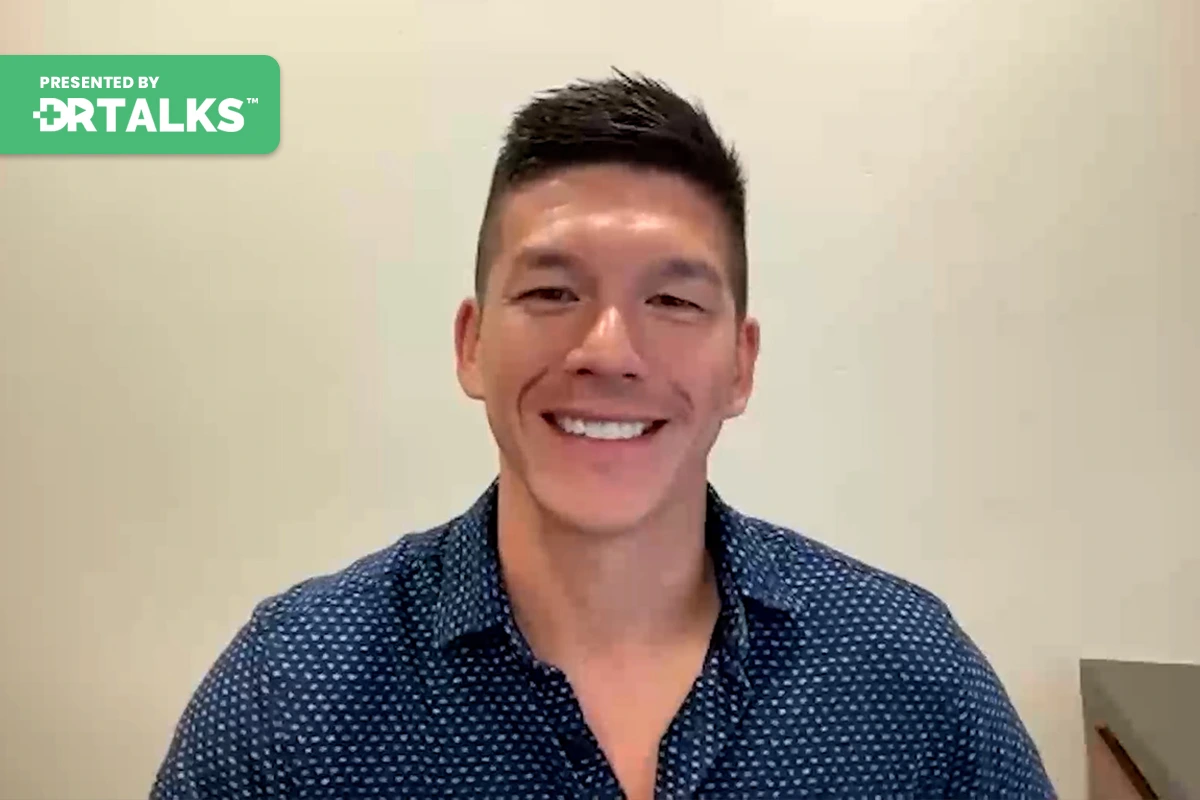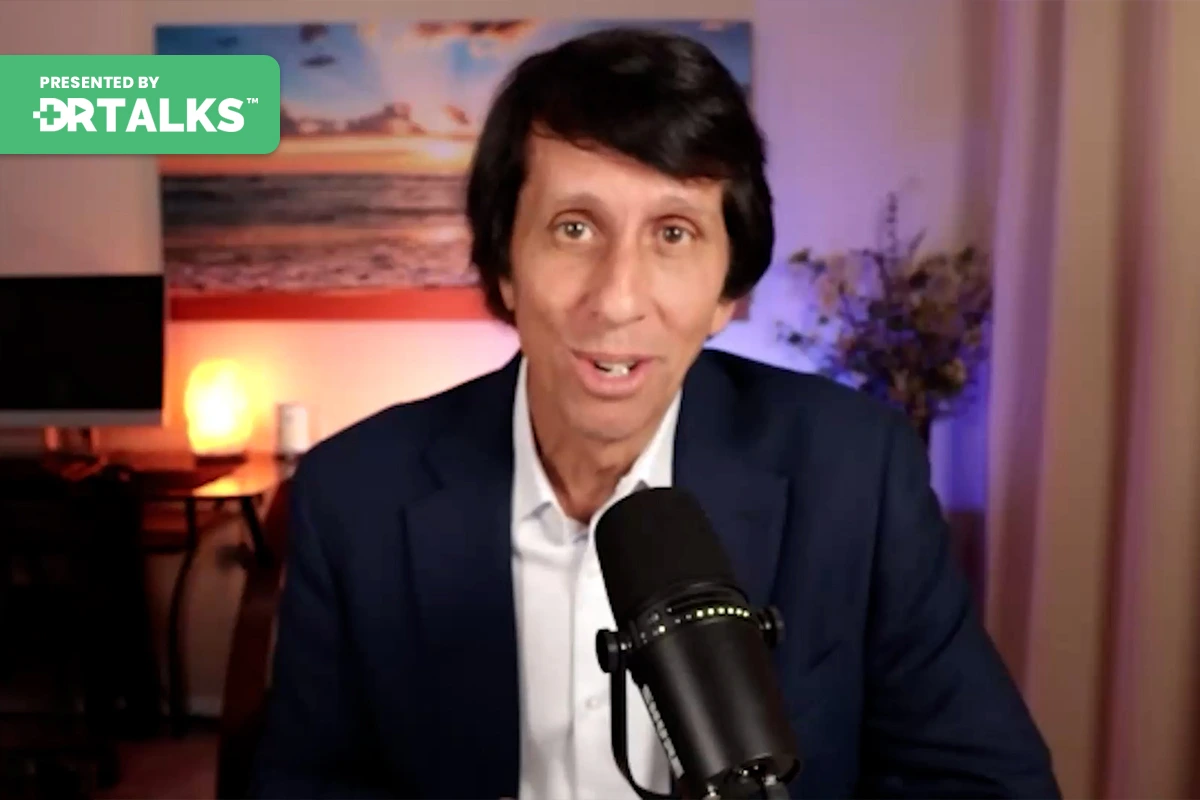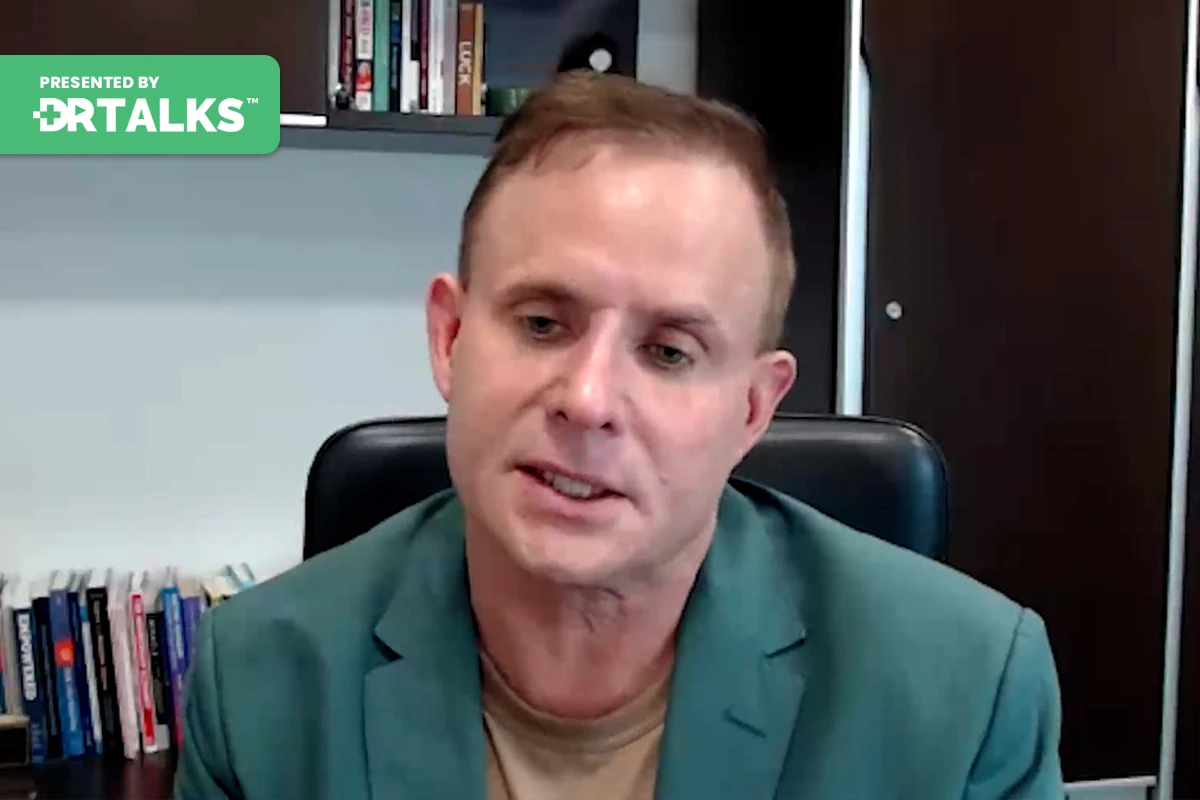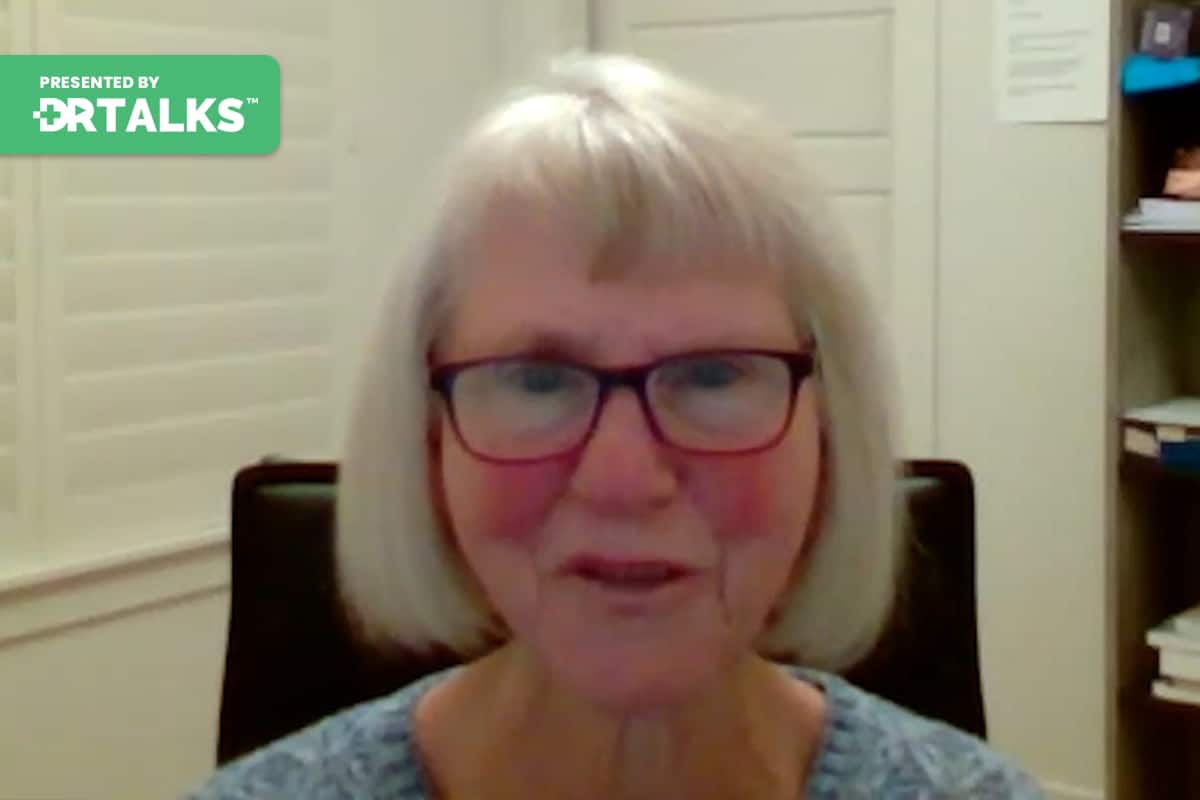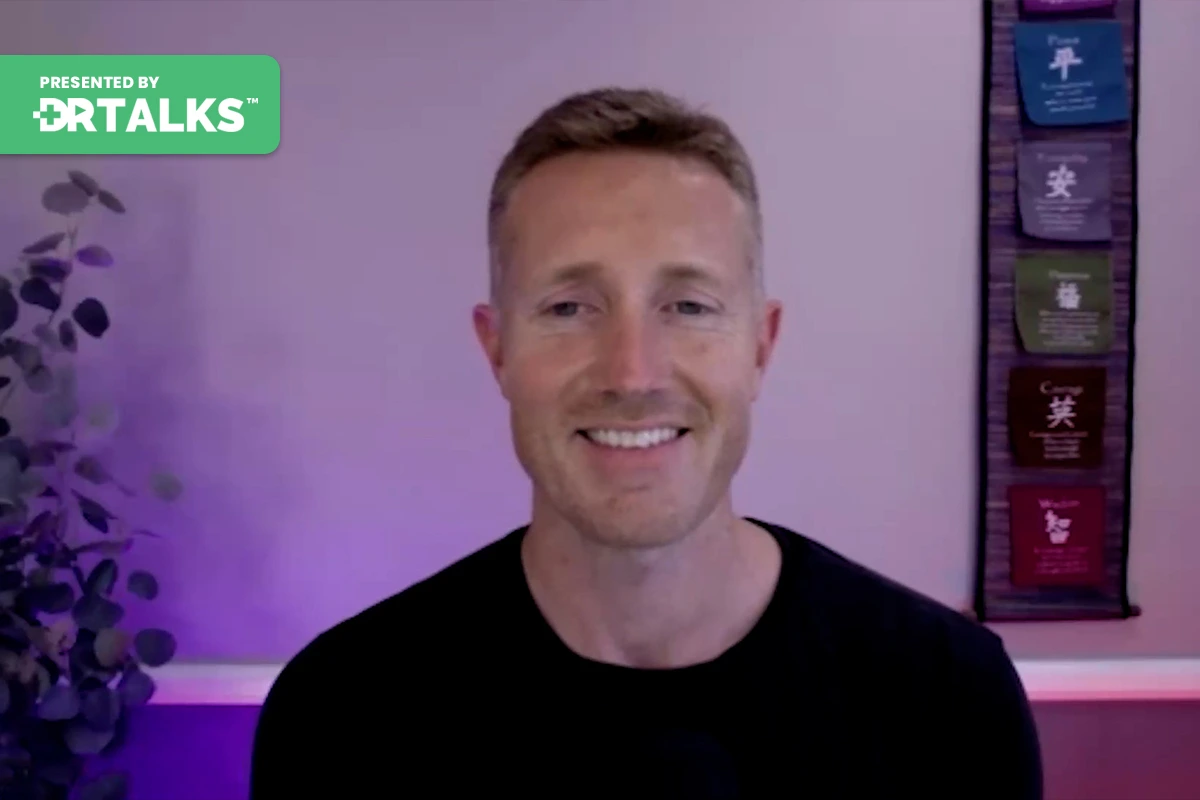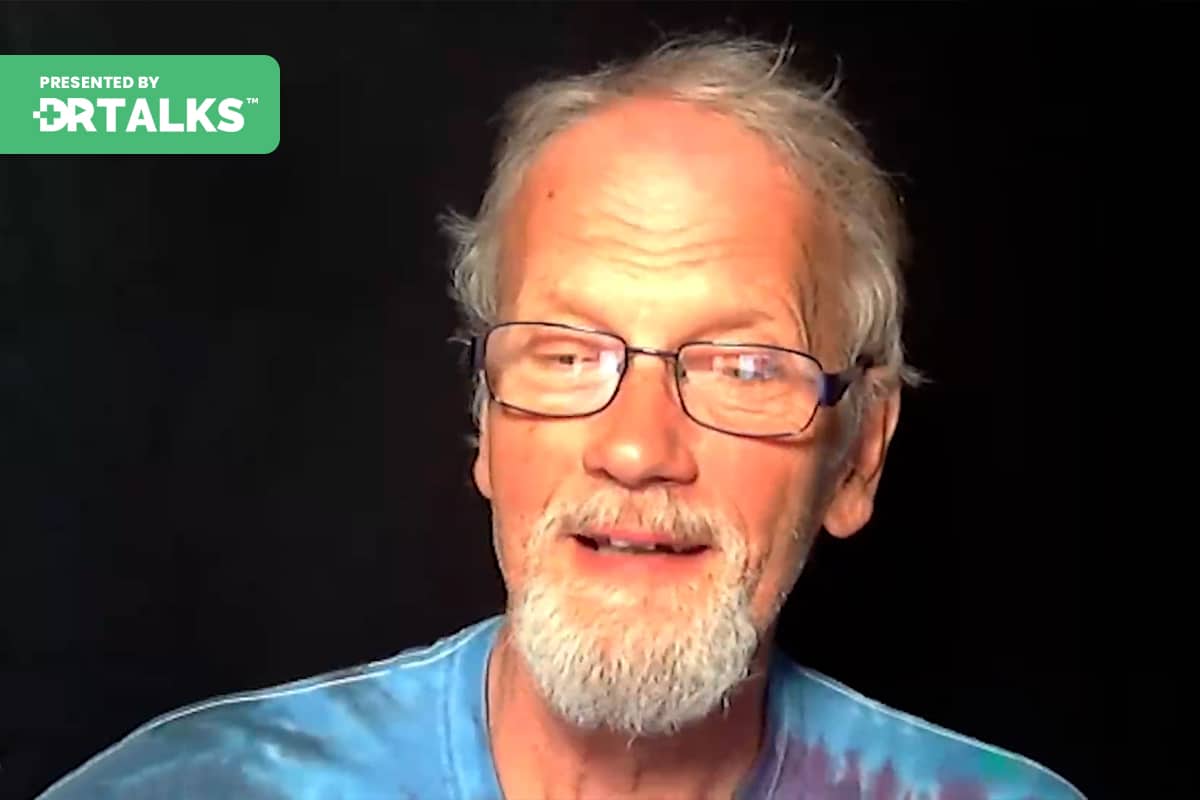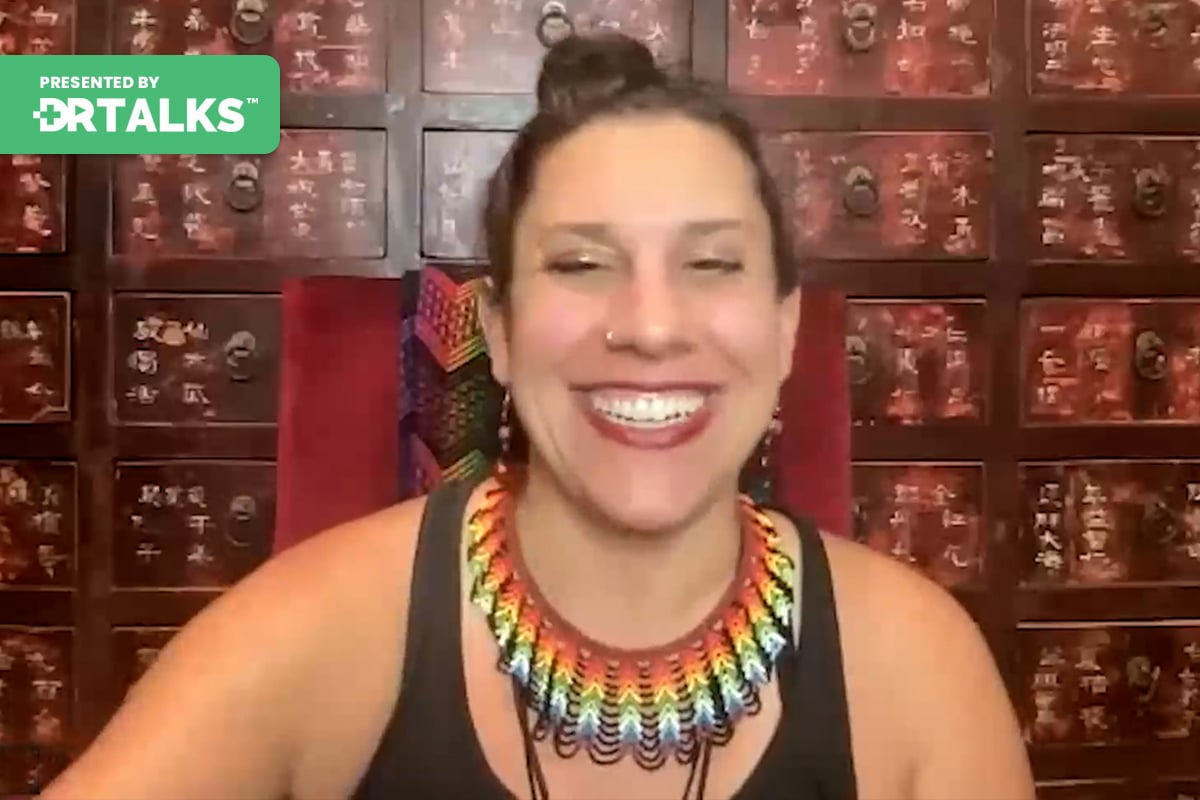Join the discussion below

Michael Karlfeldt, ND, PhD, is a Board Certified Naturopath (CTN® ) with expertise in IV Therapy, Applied Psycho Neurobiology, Oxidative Medicine, Naturopathic Oncology, Neural Therapy, Sports Performance, Energy Medicine, Natural Medicine, Nutritional Therapies, Aromatherapy, Auriculotherapy, Reflexology, Autonomic Response Testing (ART) and Anti-Aging Medicine. Dr. Michael Karlfeldt is the host of... Read More
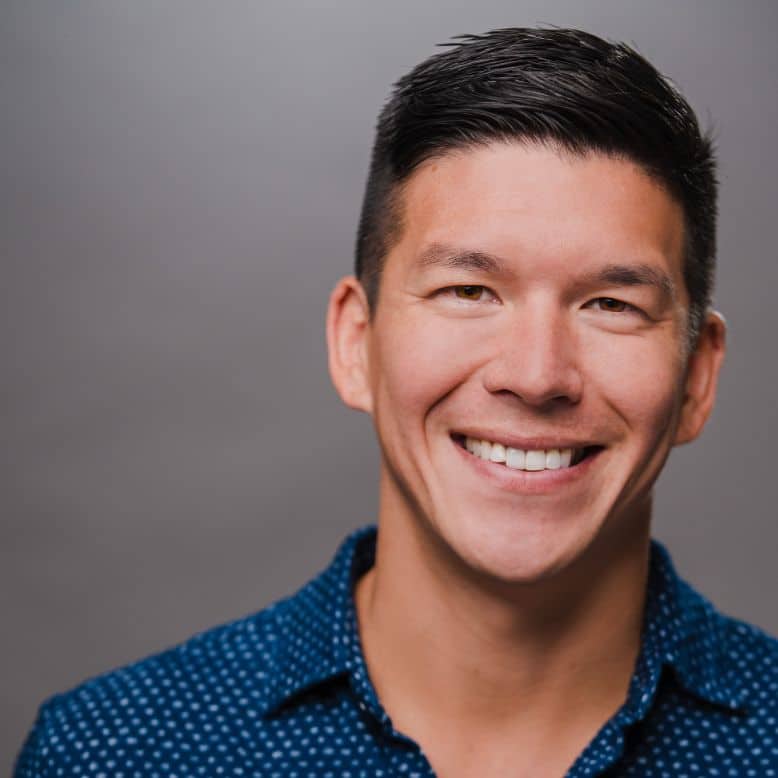
Dr. Corey King is a Naturopathic Doctor and regenerative medicine specialist. He sees patients in person at his office in Palm Springs and San Diego, CA. Dr. King has a passion for regenerative joint injections. He utilizes PRP, ozone therapy, and peptides for his patients and for himself. He loves... Read More
- How we can use natural substances to regenerate tissue and avoid surgery
- Cortisone injections vs ozone or PRP
- When to try regenerative medicine techniques and when to do surgery
Related Topics
Michael Karlfeldt, ND, PhD
Well, Corey, Dr. King, I’m so excited to have you on this episode of regenerative Medicine summit this segment. Thank you so much for joining me.
Corey King, ND
Yeah thanks for having me. I’m excited to talk about regenerative medicine with you.
Michael Karlfeldt, ND, PhD
That’s going to be so cool. Yet just for the audience, Corey King, ND is a naturopathic doctor and regenerative medicine specialist who sees patients in person at his office in Palm Springs and San Diego California. And DR King has a passion for regenerative joint injections. He utilizes PRP ozone therapy and peptides for his patients and for himself, he loves working with people on their health and enjoys using outside the box therapies to help improve their lives. Well, pain, I mean the management of pain is probably one of the most important things that we can do in regards to regenerative medicine because you know, people were looking at the over usage of like opioids and and anti inflammatory and painkillers and and that’s like the biggest killer that that we’re dealing with nowadays.
Corey King, ND
Yeah, so true pain is definitely something that patients are struggling with. They might have been in pain for a long time. It might be an acute pain. And these regenerative medicine technologies and therapies that we have that are Really natural therapies are amazing to help people get out of pain.
Michael Karlfeldt, ND, PhD
So the question is always I mean we’re gonna get more into details into different therapies that you’re doing because I mean these are what I think are therapies that are underutilized. I I don’t know how many times the patient come in and they’ve been dealing with chronic pain for 10, 15 years. And they are just beside themselves and they use one of these types of therapies and you know, all of a sudden, you know, life is back again.
Corey King, ND
Yes, that’s so true. I mean, patients can be on medications or just managing it. They might do some physical therapy and get better, but you know, in my experience when I see patients and they have any type of pain, these regenerative medicine injections, especially PRP and ozone can get them out of pain pretty quickly. And it’s pretty amazing most, most of the results that I see.
Michael Karlfeldt, ND, PhD
So, tell me a little bit, what, what are some of the people that are seeking you out? I mean, what, what are some of the complaints that they are seeing and they’re coming to you for?
Corey King, ND
Yeah, so, a lot of people with low back pain, knee pain, shoulder pain, any type of joint pain at all. I, you know, will do some imaging or they’ll have imaging already. Maybe they’ve been through physical therapy, Maybe they’ve heard of me from a referral from someone else. So yeah, anybody that’s in any type of pain. It can be acute pain or it can be chronic pain
Michael Karlfeldt, ND, PhD
Limits. Are there limitations as to where it is in the body? I mean, or can this be done for like shoulders for knees or ankles wrists elbows? I mean, is there any kind of limitation to where these therapies can be utilized?
Corey King, ND
I usually do any joint except the cervical spine. So I kind of refer out for that. Um but any other joint where I can palpate and I can feel and I know the anatomy well. So yeah, pretty much anything fingers I have had success with like, you know, rheumatoid arthritis, patients, ankles, toes. I have a lot of patients with plantar fasciitis, which is a pain in the bottom of their feet. A lot of runners that I see. Those are not the most comfortable injections, but patients get better quickly.
Michael Karlfeldt, ND, PhD
Yeah. Yeah, I know that, I warned my patients as well. Yeah, I just know that in the foot it sucks, you know, just kind of, you know
Corey King, ND
That some headphones. Yeah.
Michael Karlfeldt, ND, PhD
Think of happy places, you know. Yes. So tell me a little bit about pro zone because that is kind of the one I would say it’s the kind of least expensive. But it is kind of like a workhorse. You can get so much done with it. And obviously if that is not, if you don’t get all the results that you want out of it, then you can then escalate to other type of injections. But I mean, tell me a little bit about about pro zone, what is it?
Corey King, ND
Pro zone is the process of kind of regenerating the tendons and ligaments. There’s I guess different ways of using Prell ozone. There’s pro zone with PRP is which is what I use mainly. And then there’s pro zone with dextrose. Dextrose is just a sugar that actually goes into the cells and kind of tells the body that there is inflammation going on so your body will come and regenerate and re heal. I always give my patients a choice most of the time if patients pain are five and above. I’d recommend PRP therapy Pro zone because it’s going to work faster and they’re going to get better quicker with Prell ozone with dextrose. Usually the pain will be five and less. Most of the time patients need two or three treatments. I found that patients get better 20 to 30%. With each treatment We do treatments you know every month for 2-3 months.
Michael Karlfeldt, ND, PhD
That’s awesome. That’s awesome. And do you so how does so the dextrose, we shoot that into an area and you’re saying that it actually then tells the body there’s inflammation there and then that brings kind of a focus on that area. So regenerative you know like growth factors and regenerative components can then move to that location to start to heal that area,
Corey King, ND
Correct? Exactly. That’s exactly what happens. And with ozone Ozone is a gas that we do injections of kind of after The dextrose or the PRP. And that’s going to help oxygenate the area and help it heal quicker. And a lot of people that have had prolonged therapy without ozone, they’ll know and they’ll understand that it can be inflamed for 2-3 weeks even um adding an ozone is going to help that healing process happen. So most of my patients are down for a couple of days instead of weeks.
Michael Karlfeldt, ND, PhD
Okay, that’s incredible. And Justin I tell me if I’m wrong, I mean I have patients when I just do pro zone, you know, follow, you know, you do you follow it with the ozone? I mean I would say about 80-90% of the cases almost get resolved just by that. I mean it’s incredible what you can do.
Corey King, ND
Yeah, I’d agree. At least 80% of patients get better.
Michael Karlfeldt, ND, PhD
Yeah. Yeah, that’s incredible. So the so bringing in the ozone, I mean is it just to oxygenate or does the ozone do other things in that tissue as well when you bring that in.
Corey King, ND
So ozone at least with some of the studies that I’ve seen, it actually helps with inflammation. So it can actually decrease some of the inflammation which can be helpful for the healing process. But we don’t know a ton about it just in my clinical experience after using it, patient’s just get better. I was doing pro lo therapy without ozone when I first started practicing because they didn’t have an ozone machine and patients would be in pain for a couple of weeks and you know, it’s not fun to have, have to be in pain, come to a doctor get injections and then be in more pain. So after I started using the ozone, it just was a game changer. Patients got better quicker and we didn’t need to do as many treatments and they’re just happier.
Michael Karlfeldt, ND, PhD
Yeah, that’s awesome. And a lot of patients say they asked them, so what is the difference between this kind of therapy versus, you know, they go to a normal doc and they say, well, let’s just shoot some cortisone into it and see if that gets better. What’s the difference between the two?
Corey King, ND
Yeah, my experience patients, a lot of my patients have done that already and have done cortisone injections. Cortisone is a steroid. So first off, it’s not gonna be good for our liver. Also it can be detrimental to the actual song tissue, to the tendons and ligaments. It damages it. So in the long run it can actually cause more problems which is going to end up, you know, possibly making you have to have surgery or something else extreme. You know, some patients can get better for six months with the steroid injection. Some patients make it better for three hours. So it’s kind of hit or miss
Michael Karlfeldt, ND, PhD
Inflammation in itself is, I mean, that’s the body’s way of signaling that something is wrong in this location and tries to tell the immune system and the body that you know, please come here and heal it, correct?
Corey King, ND
Correct. Yeah, inflammation is our bodies, you know, ability to heal. So it’s a good thing. It’s just over, you know, time wear and tear on the body can become detrimental and that’s where the pain comes from. So doing the regenerative medicine injections you know, it’s gonna help with healing the tissue. In my experience most people that have pain is because the tendons and ligaments there might be an injury might be wear and tear on the body. The tendons and ligaments are loose or lax and that causes the muscle to tense up and the muscle tensing is what’s actually causing the pain. So what we’re doing with the injections and you know, for example, for a knee joint injection, I’ll do 15 to 20 injections per treatment. So I kind of target the whole the whole knee, not just one or two areas. Just because we don’t know if maybe there’s some micro micro injuries or some scar tissue in, you know, all the tendons and ligaments. So it’s just a more comprehensive treatment style. And the goal of it is to strengthen those tendons and ligaments so that the muscle can relax and that you can be out of pain.
Michael Karlfeldt, ND, PhD
Yeah. Yeah. Which is huge and so you know because to me it doesn’t make sense. I mean with the cortisone yes you do want to get out of pain but at the end of the day you want that joint or that ligament tendon to be functioning long term. So all you’re doing is is pretty much you’re shutting down the body’s ability then to communicate, you know saying that this area needs to be fixed. So you’re just shutting down the communication without them fixing the issue in itself.
Corey King, ND
Exactly. And it’s a band aid approach right? If you have a knee and you do a cortisone injection there’s no pain. You start using that knee more and more because you don’t have pain. It could just be damaging it right? Like your tendons and ligaments could be you know, getting more damage because of it.
Michael Karlfeldt, ND, PhD
It becomes like a full false sense of security. You know thinking that this is a good knee or this is a good joint. You resume your normal activities then on a damaged joint and then obviously that leads to more injuries and you know and it can be dangerous. So pro Zone talk to me a little bit about PRP. I mean what does that stand for and what is that? And what does it do?
Corey King, ND
Yeah Prp has been used for a couple of decades now. It stands for platelet rich plasma and it’s your own body, it’s your own blood product pretty much. What we do is you come into the office, we take your blood into some vials, we spin the blood within the blood. There’s a separator, a gel separator, so it separates your red blood cells. And then your plasma within the plasma there’s platelet rich plasma and that has growth factors and it has platelets. What platelets are there, the first responders to any type of injury in our body. So if we were to cut ourselves or to injure ourselves, platelets are the first thing to come and tell the body to come hell. So it you know, it will recruit growth factors. So when we get a concentration of your own blood product and do injections into specific areas, it’s gonna enhance the body to come hell. The great thing about it is it’s your own blood product, right? It’s your own your own body. Just a concentration of it to heal. It’s pretty amazing.
Michael Karlfeldt, ND, PhD
Yeah and that’s a concern people have obviously, you know, well am I going to reject it as it you know, some gonna have some kind of negative immune response. Am I gonna have an allergy to this? You know and you really can’t because it’s your it’s your own blood, it was already there. Yeah. So with the prp then is that what what does that process if a patient comes into you I mean what what does the process look like? You know what happens?
Corey King, ND
Yeah. Most of the time I get a lot of referrals from people that have had good results. So people call in, they call in the office, I’ll ask them if they’ve had imaging. If they haven’t then will either order imaging or I’ll have them come in and we’ll do a quick exam. After that they, you know, we schedule an appointment. The whole appointment takes about an hour if we’re just doing one joint they come in, we take a 4 to 8 vials of their blood. We spin it for 10 minutes. And at during those 10 minutes I’d have the patient lay down or sit down and I’d feel around do an exam. And then also mark up the areas that I’m going to inject while they’re waiting and you know, letting them know, you know, some of injections could hurt. Some of them don’t hurt. Kind of, you know, everyone’s pain tolerance is different. And then after it spins we get the blood, the platelets and I do the injections.
Michael Karlfeldt, ND, PhD
Okay. And then after the injections, I mean, are there is there anything they need to prepare themselves? You know, before the injections? I mean, are there certain things they need to avoid and then after injections, certain things that they limitations as to in regard to their activity or how do they prepare themselves?
Corey King, ND
Yeah. In my experience, most patients will definitely, patients shouldn’t be on any anti inflammatories because we’re creating inflammation. Tylenol is okay because it’s not an anti inflammatory but you know if the patients on any anti inflammatories we need to stop that a week prior. Which can be difficult for some patients because they are in pain. So they’re taking anti inflammatories like Advil to you know, stay out of pain. So you know it’s kind of a interesting dynamic but most patients will do it They can go a week without it and then they come in we do the injections usually two or three days after the injections is when I want patients to kind of relax and not do anything strenuous. But the 3rd 4th day is when I want patients to kind of get back to their normal activities. So it’s pretty quick for, in my experience most patients will be able to do that. Some patients that could be a little longer where they’re in more pain so they might need to stay off you know, off their joint for a week or so. But it just depends on patients activity level, how long they’ve been in pain. I see a lot of crossfit athletes and their stay heal so fast because you know they’re exercising so much within three days they’re back to their normal activities
Michael Karlfeldt, ND, PhD
And that’s great and What can they expect then? So they have a treatment and you said you you want to repeat the treatment again in a month or is it just that how you usually do it?
Corey King, ND
Yeah. Usually will schedule a month out from the first treatment. Sometimes they’ll need two or three treatments. It really depends some patients after one treatment they’re completely better. But most of the time it’s a 30% decrease in pain and you know overall improvement in their joint.
Michael Karlfeldt, ND, PhD
And when you kind of visual looked done like x rays or look at it ultrasound. I mean what do you see what what changes do you physically see from these type of treatment?
Corey King, ND
So I’ve only had a couple of patients do MRI’s after we’ve done treatments and they’ve improved. I’ve had a patient with low back pain and he had you know a lot of this degeneration and some dis carnations and we did three treatments a year and a half later he came back and was in a little more pain. So we ordered another M. R. I. And everything improved with his herniation is there were a lot lower. And the disc degeneration was you know mild instead of moderate. So he was happy overall. We did we ended up doing another treatment because he was still in some pain but most of my patients I don’t. I don’t actually do any other imaging because they get better and there’s no real reason to continue with doing any type of radiation or anything like that.
Michael Karlfeldt, ND, PhD
And what I’ve heard is that even though because I have patients and you’re probably the same is that you do the treatment and then, you know, you look at the X ray and they look pretty much the same. I mean, the joint, you know, still looks like it’s bone on bone, but the patient is is, you know, there’s no pain and they’re running around and and kind of going back to the normal activities and what I what I’ve heard and what my research I’ve seen that all you need is pretty much kind of one layer of cartilage in order to be able to remove that pain. And so even though visually, on an X ray it still looks like bone on bone. You know, if you just have that one layer of cartilage that has grown from the prp or from the pro zone, then you then you’ve achieved your goal. I mean, if you have that knee is more protected.
Corey King, ND
Yeah, 100% agree with you. Because all that matters is that patient’s quality of life is improved. So if they’re out of pain, who I mean in my opinion, who cares what the X ray says. If it’s bone on bone still in the X ray, but they have no pain, then that’s it’s a win in my book, patients, that’s all we care about right, like we just don’t want to be in pain. So if there’s a treatment out there that’s natural and non harming and can avoid us from having surgery or avoid us from you know, not being able to do what we want to do in life then then we should we should offer it and everyone should be able to to do it and have access to it.
Michael Karlfeldt, ND, PhD
Yeah, I mean it to me it makes sense to do the less harmful, less detrimental therapies first and see what can attraction you can get. And then if you’re not getting the results, you know that you’re looking for then you can escalate in aggressiveness but you know why not start softer and restorative and regenerative first. And if that is not the solution then you can escalate. But I think that would Result. And so many less surgeries needed to be done and so many people living and more active and pain free life.
Corey King, ND
Yeah, I agree.
Michael Karlfeldt, ND, PhD
So one of the things that you also bring into the equation are peptides. Yeah. And how do you utilize them? What are they? And are there specific one in this area that you would like to use?
Corey King, ND
Yeah, peptides are pretty much signals for our body. The peptides that I’ve been using for joint pain and for tissue regeneration are all natural. Our body makes them naturally. One of them is called BPC 1 57 and it was actually discovered in our stomach acid. So we have it normally in our own body which is amazing. I’ve found that patients kind of reach out to me looking for peptides just because it’s kind of a regenerative medicine word. And I’ve had some patients that have a shoulder injury and don’t really want to do the Prp because they’re you know iffy about doing all the injections so we’ll just start them on BpC 1 57 and they can get better. So it’s been shown to help with regenerating the joints, breaking up scar tissue and helping with inflammation.
Michael Karlfeldt, ND, PhD
There’s another one.
Corey King, ND
Oh go ahead. Yes.
Michael Karlfeldt, ND, PhD
So with that one do you do that then orally or do you inject it on site or do you do both?
Corey King, ND
Yeah. That’s a good question. BPC 1 57 does come in an oral version. I usually use the oral version only for patients that are having actual digestive issues like acid reflux. The injectable is the one that I recommend for patients to use. And it’s a subcutaneous injection. A really small needle and I have patients do injections once a once a day for either 2 to 3 months.
Michael Karlfeldt, ND, PhD
And they do they shoot that on site where they have the issue or they can just do sub Q. In the belly for that.
Corey King, ND
It just depends on the patient’s comfort level. A lot of the patients that I don’t want them to do it on the site just because they’re not comfortable with it. So I would just have them do it in the belly. But patients that I can educate that are okay with doing injections that I think are comfortable with it, I can have them do it around the joint. I’ve had patients that have seen other doctors and they’ve done it into the joint and they get lumps and it’s just not a good thing. So I’d rather have them just do it into the belly subcutaneous because it’s going to get into the bloodstream and go where it needs to go.
Michael Karlfeldt, ND, PhD
Yeah, exactly. That’s what’s so fascinating with these peptides is that their functions specific and so they go and do a very specific job. They don’t go and run and do other things. I mean like the BBC, like you said, you know, we can scar tissue, tissue regeneration. So wherever there’s an injury, you know, that’s where we’ll go and that’s what will work. And are there other peptides you use as well or is that kind of the main one?
Corey King, ND
Yeah. The other one I use for joints is called thymosin beta. And this is a natural peptide as well. It’s kind of from our thymus gland, which regulates our immune system, but it also helps with any type of tissue regeneration in terms of muscle. So it’s actually in our skeletal muscle and in our heart muscle smooth muscle. So I kind of combined both of those when I have patients to a peptide some just want to try one but I always recommend doing both of them. And then even when patients are doing pRP injections, I’d recommend them to do the peptides after the treatment.
Michael Karlfeldt, ND, PhD
Love it. And with this are there people that they come to your office and you know, you do valuation and you say that I’m sorry. You know what I have I can’t you do need to have surgery. Is there a line that you draw? I mean what people should seek you out versus and thinking I should probably just go and have surgery. It’s that,
Corey King, ND
Yeah. it’s really hard for me to turn people away because I’ve had such amazing success with patients especially like bone on bone and they’re supposed to have surgery and after a couple of treatments they’re out of pain or their 60% better. So yeah, it’s most of the time if a patient came to me and I thought it wasn’t a good case, I would maybe do the treatment for cost just to see how, you know, because I can’t guarantee anything. It might be something outside the box of what I’m used to. But I don’t want to turn patients away so most of the time I would, you know, give them a discount or something in case I’m not comfortable with it.
Michael Karlfeldt, ND, PhD
Yeah,
Corey King, ND
I had a patient that actually had you know, she had plantar fasciitis, but it really wasn’t plantar fasciitis, it was um kind of up in the more medial portion of the foot and I told her like, I can’t guarantee this is gonna work, let’s just, you know, cut the price in half and we’ll we’ll see. And she’s been an amazing patient. She wasn’t able to run for a couple of years and she was a big runner. She ran marathons and now a year and a half later she’s gonna do the Boston marathon. So it’s pretty amazing.
Michael Karlfeldt, ND, PhD
That’s awesome. That’s so cool. But what are some of the other stories that you’ve had, you know, some cool stories that, you know, so people can understand the impact and what can be done and you know, the successes they can have these kind of therapies.
Corey King, ND
Yeah, one that comes to mind is this gentleman, he will, he’s probably in the sixties and he came in in a walker and was hunched over super bad back pain probably eight out of 10 in the pain scale and couldn’t do surgery. I think he had surgery in the past and wasn’t going to do another surgery and heard of me from another patient of mine we did three treatments and by the second treatment he wasn’t even in a walker anymore, he’s standing up straight and walking normally which is just amazing. And a lot of my patients come to me for re general medicine and then I start talking to them obviously about naturopathic medicine and their health and blood work. So he ended up becoming a patient on the naturopathic medicine side.
So he checked his hormones like cortisol and got him on supplements and he’s losing weight. So yeah he’s doing a lot better just overall health wise which as you know, it’s super important to look at your diet, nutrition like regenerative medicine, the PRP and the ozone and peptides. They’re they’re all kind of high end regenerative medicine you know just taking vitamin C. And eating well and decreasing inflammation. That’s all regenerative as well. Our body wants to regenerate right? It’s a healing process happening all the time. So if we can detox and you know get rid of all these toxins that are in our body then it’s going to have a better time of improving
Michael Karlfeldt, ND, PhD
And that’s what’s important for people to realize is that you know the joints and ligaments and all that is kind of a result of what’s going on in the body as a whole. So by address by addressing the body as a whole in addition to being site specific with the prp with the pro zone but addressing it like you’re saying, you know getting rid of the toxins and and then obviously you need to feed the body the building materials that need in order to be able to support that joint or support those ligaments. You know otherwise they’re gonna be weak. So that’s where nutrition comes in. So what are some of the nutrients that you feel and also herbs that you seem to be very helpful along with the prp. And pro zone you know to help to strengthen and support the joints that people can think of you know when they have issues.
Corey King, ND
Yeah so just overall I mean having a really good daily vitamin to get all the minerals all your B. Vitamins they’re all necessary for our D. N. A. To repair for our body to heal. So that’s like number one um you know looking at the gut and having a stool test probably once a year can be really important because a lot of inflammation can be coming from the gut. So I do that with most of my patients because you know some patients might be constipated, they might have long term diarrhea and they just think it’s normal and it’s not normal to have a long term diarrhea. So it’s important to get a stool test or to you know check it out so that we can kind of determine what’s going on with your microbiome and then getting them out of protocol to either clean the gut out or to, you know give it nutrients I. G. G. Or whatever is necessary um specific for the joint glucosamine and chondroitin are definitely some good supplements that can be helpful vitamin D. I guess that vitamin C. So. Yeah.
Michael Karlfeldt, ND, PhD
Yeah awesome. Well Dr. King. It’s been a pleasure. I mean you’re amazing in the work that you that you do and I’m there’s it’s so important for people to have resources like you to be able to go to when they are dealing with pain because we know how important it is to move to be able to exercise the emotional well being that that that brings. And then also it is probably one of the greatest preventers of other chronic diseases that we’re dealing with. Like heart disease, cancer, diabetes and all these major killers. So to be able to go to someone like you to address the pain so you can keep on moving and be active. That will then have increase your longevity and increase your ability to enjoy life.
Corey King, ND
Yeah exactly. I mean just being able to go for a walk for 30 minutes a day can be so beneficial in your overall quality of life but also your longevity and keeping you out of the hospital as we age.
Michael Karlfeldt, ND, PhD
Yeah that’s awesome. Well thank you so much Dr. King for all of this.
Corey King, ND
Yes thank you so much. I appreciate it.
Downloads

